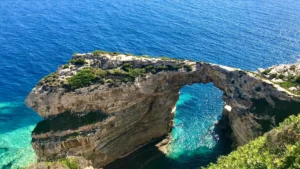When it comes to colonial adventures, the British have a lot to answer for. One of our more pleasant inventions, however, was the hill station. Whenever the British Empire spread to somewhere considered a bit too hot, which for Brits meant pretty much anywhere in Asia, it was seen as essential to establish resorts in the hills where officers and other ex-pats could cool off.
I certainly noticed something rather British about the changeable weather in Tanah Rata, one of the main towns in the Cameron Highlands on the western side of the Malaysian peninsula. When I arrived at around 1,500 meters above sea level, the dreary grey skies, mist, and rain recalled my native country, although not in a particularly good way. Thankfully, it improved later in my stay.
More bizarrely, the view from my guesthouse was dominated by tall buildings designed in a style known as “mock Tudor,” a revival of 16th century British architecture distinctive for its half-timbered black-and- white look. While the style started in the 19th century as a strike against industrial conformity, it has more recently been adopted for two-storey homes in generic suburban estates. Although I knew that it had been popular in British colonial architecture, it was strange to see new tower blocks still being built in such a self-consciously quaint style.
These new mock Tudor hotels are just part of the extensive development that is taking place in the Cameron Highlands, including a new highway intended to bring more tourists than ever before. It’s a far cry from the early days of settlement in the area, named after British surveyor William Cameron who mapped the nearby mountains in 1885. In fact it was a Malay man called Kulop Riau on the same expedition who discovered the highlands, but he was conveniently overlooked when it came to naming the area.
When British settlers arrived in the 1930s, forming a genteel community complete with a golf course, they soon discovered that the hills were perfect for growing tea—widely considered a quintessentially English drink despite its Asian origins. Today the Cameron Highlands are the center of tea production for the country. It is hard to find a shop or hotel that doesn’t sell tea either loose or in bags, and visiting one of the plantations is pretty much essential.
One of the most popular, and the one that I visited on a day tour of the highlights of the highlands, is the Boh company’s plantation and factory. The visitor center is well organized, with a series of information boards about the industry and a café boasting fantastic views over the plantation. After a drink, you can take a quick tour of the factory. Plastic screens keep you away from the machinery but my tour guide did a decent job of explaining the processes.
Another crop introduced by the British was the strawberry, and images of the fruit are ever present in the Cameron Highlands. In Britain we tend to think of strawberries as being very British, particularly during the annual Wimbledon tennis tournament when people are strangely willing to pay a small fortune for strawberries and cream. In fact strawberries were first cultivated in France and the major contemporary producer is the USA, but I didn’t let that worry me when I popped in to pick a few at one of the many farms.
There is, of course, a limit to how much an Asian plateau can resemble a European island, and this was graphically illustrated at another stop on the day tour: the local butterfly garden. The collection of insects included some weird and wonderful specimens, but nothing I couldn’t imagine seeing at the London Zoo. Then our guide mentioned that they were all caught locally. The snakes, too.
The day tours, arranged through hotels or offices in Tanah Rata, are organized to pack in as much as possible. They may not suit the traveler looking for the most “authentic” experiences, but if your time is limited then they are a good way to see a bit of everything. Just make sure of what is included for the stated price, typically around RM60–RM100 (Php830–Php1,380) per person. On my tour, for example, we managed to fit in a two-hour hike through the jungle.
Leaving from a small village, we followed well-worn paths through the undergrowth and crossed small rivers on rudimentary bamboo bridges in search of a flowering Rafflesia. Always popular with tourists, from a European point of view the Rafflesia is about as exotic as the plant world gets. But even here there’s a touch of Britain: the plant may have been found by an Indonesian man, but it is named after the leader of the expedition—Stamford Raffles, the founder of Singapore. One of the perks of colonial rule, I suppose.







